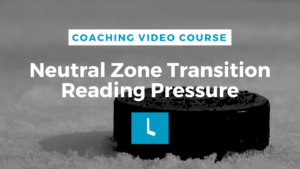Shhh! Just kidding! Finding the quiet zones on the ice with no one in them is a rare opportunity that can help create offensive opportunities in an otherwise hectic shift. Here we get into the areas of the ice that help us get out of trouble in our own end or catch the opposition off guard by using unattended areas of the ice to create offense.
Purpose of Video:
We are going to discuss a topic now that we will elaborate on in the offensive and defensive zone later in the course. It’s the “ideal quiet zone”.
[maxbutton id=”2″ ]
Quiet Zones:
Quiet Zones on the ice are areas that don’t have players in them, but may be immediately involved in the play. Typically, in either zone, the quiet zones can often be the corners and generally they’re the corners on the weak side. If the puck is in one corner and the players are battling for it. If the puck moves over to the free zone, that means they’re moving it into a quiet zone.
Whether you are offense or defense, if you are the first to reach the puck, it generally gives you a little bit of time and space to breathe, regroup, and make your attack. Connected to that, can be the back door, which you need to defend while playing defense, or use to try to exploit while playing offense. Let’s say the puck is in a certain position, and the focus of the defenders is generally on the area where the puck is. The back door is a quiet zone, in behind the defenders, and either a shot/ pass straight across can either be a great play on the offense, or a deadly play to you when you are playing defense. Moving the puck to an area that is being disregarded by the other players is moving the puck to a quiet zone.
Then there is the final style of using quiet zones that is discussed in this short video. When the players coming up the boards moves the puck back down into the corner from where they just came, it is called cycling. We will elaborate later, but that generally tends to bring the defender up the wall and moving the puck back into that now open area gives the next player to jump on that loose puck some time and and space in order to make a play and create offence. That encapsulates quiet zones, cycling, and using the back door.
Looking for drills? We’ve got that covered too. Click here. Perfect for recreational level coaches.





